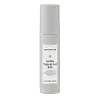What's inside
What's inside
 Key Ingredients
Key Ingredients

 Benefits
Benefits

 Concerns
Concerns

No concerns
 Ingredients Side-by-side
Ingredients Side-by-side

Water
Skin ConditioningButylene Glycol
HumectantGlycerin
HumectantDipropylene Glycol
HumectantDiglycerin
HumectantHydrolyzed Sponge
Skin ConditioningAscorbic Acid
AntioxidantAscorbyl Glucoside
AntioxidantNiacinamide
SmoothingGlutathione
Azelaic Acid
BufferingCentella Asiatica Extract
CleansingHydrolyzed Sodium Hyaluronate
Skin ConditioningCeramide NP
Skin ConditioningAllantoin
Skin ConditioningSoluble Proteoglycan
Skin ConditioningJania Rubens Extract
Skin ConditioningPhellodendron Amurense Bark Extract
Skin ConditioningTremella Fuciformis Polysaccharide
Emulsion StabilisingCellulose Gum
Emulsion StabilisingErythritol
HumectantPolyacrylate Crosspolymer-6
Emulsion StabilisingInositol
HumectantEthylhexylglycerin
Skin ConditioningTrehalose
HumectantLauroyl Lysine
Skin ConditioningHydrogenated Lecithin
EmulsifyingSodium Hydroxide
BufferingSodium Carrageenan
Emulsion StabilisingPhenoxyethanol
PreservativeWater, Butylene Glycol, Glycerin, Dipropylene Glycol, Diglycerin, Hydrolyzed Sponge, Ascorbic Acid, Ascorbyl Glucoside, Niacinamide, Glutathione, Azelaic Acid, Centella Asiatica Extract, Hydrolyzed Sodium Hyaluronate, Ceramide NP, Allantoin, Soluble Proteoglycan, Jania Rubens Extract, Phellodendron Amurense Bark Extract, Tremella Fuciformis Polysaccharide, Cellulose Gum, Erythritol, Polyacrylate Crosspolymer-6, Inositol, Ethylhexylglycerin, Trehalose, Lauroyl Lysine, Hydrogenated Lecithin, Sodium Hydroxide, Sodium Carrageenan, Phenoxyethanol
Water
Skin ConditioningPropanediol
SolventPotassium Azeloyl Diglycinate
Skin ConditioningPolyacrylate Crosspolymer-6
Emulsion StabilisingNiacinamide
Smoothing3-O-Ethyl Ascorbic Acid
Skin ConditioningCaprylyl Glycol
EmollientCoffea Arabica Seed Extract
MaskingSodium Hyaluronate
HumectantPhenylpropanol
MaskingPhenoxyethanol
PreservativeCitric Acid
BufferingPotassium Chloride
Glycerin
HumectantChlorphenesin
AntimicrobialTocopherol
AntioxidantPotassium Sorbate
PreservativeSodium Benzoate
MaskingWater, Propanediol, Potassium Azeloyl Diglycinate, Polyacrylate Crosspolymer-6, Niacinamide, 3-O-Ethyl Ascorbic Acid, Caprylyl Glycol, Coffea Arabica Seed Extract, Sodium Hyaluronate, Phenylpropanol, Phenoxyethanol, Citric Acid, Potassium Chloride, Glycerin, Chlorphenesin, Tocopherol, Potassium Sorbate, Sodium Benzoate
 Reviews
Reviews

Ingredients Explained
These ingredients are found in both products.
Ingredients higher up in an ingredient list are typically present in a larger amount.
Glycerin is already naturally found in your skin. It helps moisturize and protect your skin.
A study from 2016 found glycerin to be more effective as a humectant than AHAs and hyaluronic acid.
As a humectant, it helps the skin stay hydrated by pulling moisture to your skin. The low molecular weight of glycerin allows it to pull moisture into the deeper layers of your skin.
Hydrated skin improves your skin barrier; Your skin barrier helps protect against irritants and bacteria.
Glycerin has also been found to have antimicrobial and antiviral properties. Due to these properties, glycerin is often used in wound and burn treatments.
In cosmetics, glycerin is usually derived from plants such as soybean or palm. However, it can also be sourced from animals, such as tallow or animal fat.
This ingredient is organic, colorless, odorless, and non-toxic.
Glycerin is the name for this ingredient in American English. British English uses Glycerol/Glycerine.
Learn more about GlycerinNiacinamide is a multitasking form of vitamin B3 that strengthens the skin barrier, reduces pores and dark spots, regulates oil, and improves signs of aging.
And the best part? It's gentle and well-tolerated by most skin types, including sensitive and reactive skin.
You might have heard of "niacin flush", or the reddening of skin that causes itchiness. Niacinamide has not been found to cause this.
In very rare cases, some individuals may not be able to tolerate niacinamide at all or experience an allergic reaction to it.
If you are experiencing flaking, irritation, and dryness with this ingredient, be sure to double check all your products as this ingredient can be found in all categories of skincare.
When incorporating niacinamide into your routine, look out for concentration amounts. Typically, 5% niacinamide provides benefits such as fading dark spots. However, if you have sensitive skin, it is better to begin with a smaller concentration.
When you apply niacinamide to your skin, your body converts it into nicotinamide adenine dinucleotide (NAD). NAD is an essential coenzyme that is already found in your cells as "fuel" and powers countless biological processes.
In your skin, NAD helps repair cell damage, produce new healthy cells, support collagen production, strengthen the skin barrier, and fight environmental stressors (like UV and pollution).
Our natural NAD levels start to decline with age, leading to slower skin repair, visible aging, and a weaker skin barrier. By providing your skin niacinamide, you're recharging your skin's NAD levels. This leads to stronger, healthier, and younger looking skin.
Another name for vitamin B3 is nicotinamide. This vitamin is water-soluble and our bodies don't store it. We obtain Vitamin B3 from either food or skincare. Meat, fish, wheat, yeast, and leafy greens contain vitamin B3.
The type of niacinamide used in skincare is synthetically created.
Learn more about NiacinamidePhenoxyethanol is a preservative that has germicide, antimicrobial, and aromatic properties. Studies show that phenoxyethanol can prevent microbial growth. By itself, it has a scent that is similar to that of a rose.
It's often used in formulations along with Caprylyl Glycol to preserve the shelf life of products.
Polyacrylate Crosspolymer-6 is a texture enhancer and pH adjuster.
It is be used to thicken water-based products and create a gel-texture with a velvet feel.
One manufacturer claims this ingredient to have a pH range of 2-8 and to be biodegradable.
Learn more about Polyacrylate Crosspolymer-6Water. It's the most common cosmetic ingredient of all. You'll usually see it at the top of ingredient lists, meaning that it makes up the largest part of the product.
So why is it so popular? Water most often acts as a solvent - this means that it helps dissolve other ingredients into the formulation.
You'll also recognize water as that liquid we all need to stay alive. If you see this, drink a glass of water. Stay hydrated!
Learn more about Water